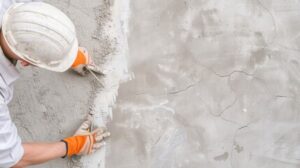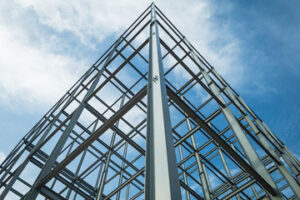Foundation problems can cause sleepless nights for homeowners, with visions of extensive damage and costly repair costs. However, identifying the warning signs early and understanding available repair methods can transform what appears to be a dire situation into a manageable home improvement project.

Plano Foundation Repair can be accomplished using a variety of methods, including piering and pilings. These supports are installed underground through digging and drilling, then poured with concrete for bell-bottom piers or driven into the ground under hydraulic pressure for piles.
The soil that supports your home’s foundation has a major impact on its stability. Different types of soil have varying load-bearing capacities and moisture retention properties. Additionally, natural and environmental factors affect the soil’s structure, which in turn influences its stability.
When the loads on a building exceed the bearing capacity of the soil stratum directly below, it causes downward movement of the underlying soil. This is called settlement. Settlement can occur in all soil types, but it is more common in clay-based soils.
The reason for this is the soil’s high plasticity. Clay soils expand when wet and shrink when dry, which can have a dramatic effect on the surrounding buildings. Moreover, heaving soils can also cause cracking in the superstructure above the ground.
Fortunately, there are ways to address soil movement problems that can prevent further damage to the building’s foundation and superstructure. One way is to reposition the foundation by adding footings. This is relatively easy to accomplish and may only require a small amount of excavation. Another option is to lift the entire foundation, which is a more expensive remedy. However, it allows contractors to offer warranties for heaving conditions that they would not be able to offer with repairs to the existing slab foundation.
Another method to address soil movement is to make grading and drainage improvements. This can include installing drain tile and gutters that redirect water away from the house. It is important that this water does not pool around the foundation because it can oversaturate the soil, which leads to pressure against the slab and other issues.
Waterproofing the basement walls and floors is also an effective preventative measure to reduce the risk of foundation damage from moisture infiltration. This includes coating the basement walls and ensuring that proper waterproofing membranes are installed at vulnerable areas such as drains and expansion joints.
In the long term, the best solution is to stabilize the soil under and around your foundation. This can be done through a variety of techniques, including deep soil nailing and slab injection. These methods stabilize sinking slabs and address unstable soil conditions, preventing further damage to the foundation and superstructure.
Water Damage
A strong foundation is the backbone of your home, so any water damage can have a major impact on its structural integrity. Water causes many different issues that can affect your foundation, from settling and shifting to the formation of cracks and other problems. It can also erode the soil around your foundation, making it more unstable. Water damage is especially common in areas that experience frequent rain or flooding.
Heavy rainfall, flooding and groundwater rises can cause the soil to become saturated, leading to swelling, shrinkage or erosion. Inadequate drainage can also lead to this problem, with the lack of gutters or downspouts resulting in excessive soil saturation during heavy rains. This constant soil expansion and contraction causes hydrostatic pressure to build up, which can push against the foundation walls and create serious damage if left untreated.
If you notice puddles or wet spots in your yard, it’s time to call a professional for a foundation inspection and possible repairs. A contractor can install a drain tile system, which is designed to keep water out and prevent further damage. These systems can be installed either interior or exterior, depending on the severity of your situation.
A more serious issue caused by water is the presence of mold or mildew in and around your foundation. This is a sign that there is excess moisture and that the foundation needs to be repaired, as mold and mildew thrive in damp environments.
Another water problem that could require a foundation repair is plumbing leaks. If you notice leaks in your basement or around your foundation, it’s time to call a contractor to have them fixed as soon as possible. Leaking pipes can seep into the soil and cause damage to your foundation, creating a void that can lead to further problems.
When hiring a foundation repair company, choose one with years of experience and an excellent track record. You should also look for a local company with knowledge of your area’s climate and soil conditions, as this will help them offer more effective solutions.
Poor Construction
The foundation is the cornerstone of your home’s structural integrity, supporting everything from walls to floors. A stable foundation contributes to a home’s value and longevity, so it’s essential that any issues are addressed promptly. A variety of factors can affect a foundation’s stability, ranging from environmental conditions to construction errors. Understanding these factors can help you identify warning signs and ensure that your foundation is repaired properly.
Soil movement is a major cause of foundation problems. The shift in soil density or moisture content can cause the foundation to sink, which often leads to cracks and misalignment of the building’s structure. Expansive clay soils are particularly problematic, as they swell with water and shrink with dryness, putting additional pressure on the foundation. Poor soil preparation and grading can also lead to uneven settlement, causing the foundation to shift and crack over time.
Poor construction can refer to a wide range of issues, including inadequate soil preparation and the use of subpar materials. Improper soil preparation can compromise the load-bearing capacity of a foundation, while the use of poor-quality concrete or reinforcement bars may result in a weaker foundation. Building code violations and hasty construction can also lead to mistakes that can impact the durability of a foundation.
All new homes go through a period of initial settling, which can put stress on the foundation and damage its structure. However, this settling can be much more severe if the foundation is not constructed properly.
Some of the most common warning signs of a foundation issue are hairline cracks in walls or floors, cracks at window openings and staircases, and leaning chimneys. In addition, a leaking basement or crawl space and damp soil around the foundation are indicators of a problem that needs to be addressed as soon as possible.
A foundation repair expert can use advanced techniques to stabilize and lift a foundation, preventing further damage to the structure. These methods can include steel piers and helical piers, which are installed beneath the foundation to provide extra support and lift the building. These methods are a good option for existing homes that require foundation lifting, as well as new construction projects.
Poor Drainage
As the saying goes, “An ounce of prevention is worth a pound of cure.” This is especially true when it comes to preventing damage to your foundation. Taking steps to ensure that your drainage system is working properly can help to prevent structural damage to your building as well as protect the soil around it.
Poor drainage is a common problem that can affect buildings of all types and sizes. It can lead to water pooling in the yard or near the foundation, causing cracking and settling over time. If left unattended, this can lead to extensive and expensive foundation repair costs.
To avoid these problems, property owners should regularly inspect the condition of their foundation and their drainage systems. In addition, they should consult with professionals who specialize in drainage correction and foundation repair to protect their investment in the structure and its longevity.
Identifying Problems
The first step in addressing a drainage issue is to take a walk around the property after heavy rains and snow melts to look for areas where the soil has pooled. This can reveal a number of issues including excessive moisture levels that can lead to mold growth and insect infestation. It can also indicate that the soil has swelled due to excess moisture, increasing pressure on the foundation walls.
When these conditions are addressed, the water can be diverted away from the foundation by a variety of methods. These include French drains that redirect surface and ground water, gravel-filled trenches with perforated pipes that reduce hydrostatic pressure on walls, and grading to minimize the amount of soil at the foundation site. In addition, the proper placement of trees and shrubs can help to direct water flow away from the foundation.
It’s also important to regularly check the grading of the soils surrounding your home and address any issues that arise as soon as possible. For example, if you notice that the grading has changed and is directing water towards the foundation, this can create a swampy area that will eventually cause sinking of the concrete slab.
